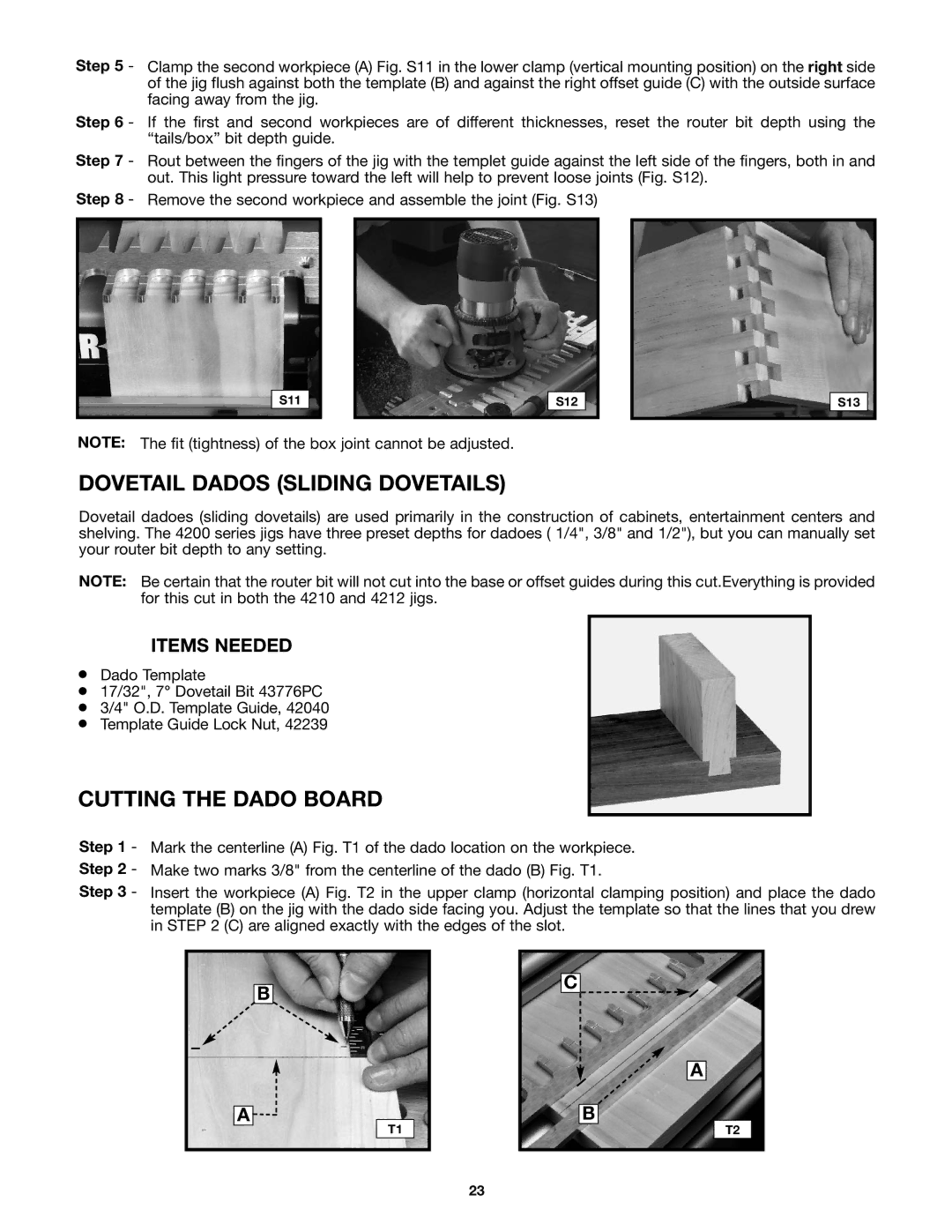
Step 5 -
Step 6 -
Step 7 -
Step 8 -
Clamp the second workpiece (A) Fig. S11 in the lower clamp (vertical mounting position) on the right side of the jig flush against both the template (B) and against the right offset guide (C) with the outside surface facing away from the jig.
If the first and second workpieces are of different thicknesses, reset the router bit depth using the “tails/box” bit depth guide.
Rout between the fingers of the jig with the templet guide against the left side of the fingers, both in and out. This light pressure toward the left will help to prevent loose joints (Fig. S12).
Remove the second workpiece and assemble the joint (Fig. S13)
|
|
|
|
|
|
|
| S11 |
|
|
| S12 |
|
|
|
|
|
|
|
|
|
|
|
|
|
|
|
NOTE: The fit (tightness) of the box joint cannot be adjusted.
S13
DOVETAIL DADOS (SLIDING DOVETAILS)
Dovetail dadoes (sliding dovetails) are used primarily in the construction of cabinets, entertainment centers and shelving. The 4200 series jigs have three preset depths for dadoes ( 1/4", 3/8" and 1/2"), but you can manually set your router bit depth to any setting.
NOTE: Be certain that the router bit will not cut into the base or offset guides during this cut.Everything is provided for this cut in both the 4210 and 4212 jigs.
ITEMS NEEDED
●Dado Template
●17/32", 7° Dovetail Bit 43776PC
●3/4" O.D. Template Guide, 42040
●Template Guide Lock Nut, 42239
CUTTING THE DADO BOARD
Step 1 - Step 2 -
Step 3 -
Mark the centerline (A) Fig. T1 of the dado location on the workpiece.
Make two marks 3/8" from the centerline of the dado (B) Fig. T1.
Insert the workpiece (A) Fig. T2 in the upper clamp (horizontal clamping position) and place the dado template (B) on the jig with the dado side facing you. Adjust the template so that the lines that you drew in STEP 2 (C) are aligned exactly with the edges of the slot.
B
A![]()
T1
C
A
B
T2
23
